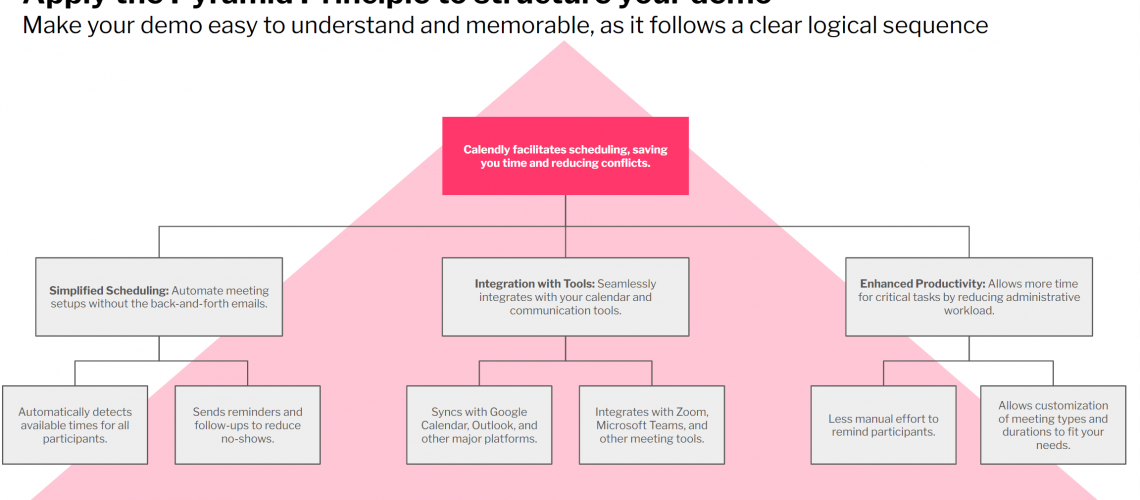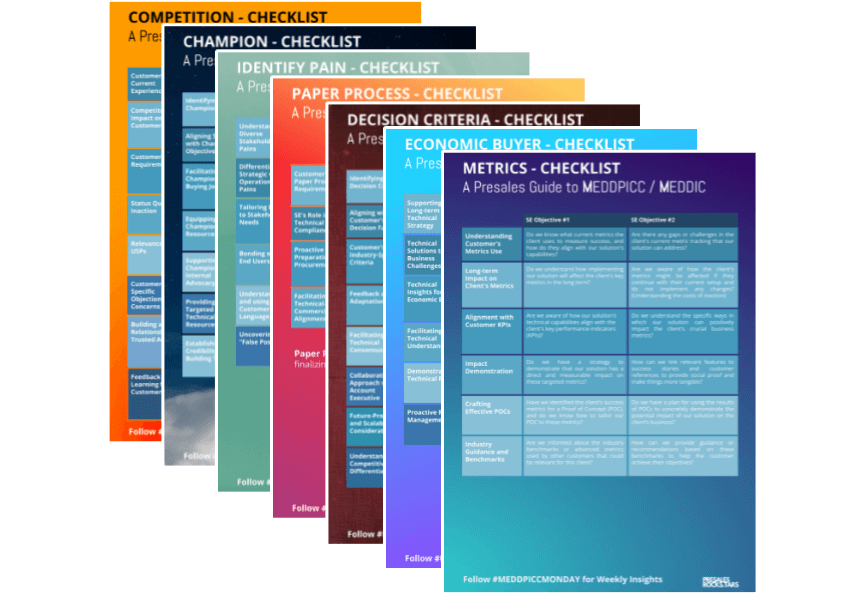Delivering a successful software demo isn’t just about showcasing features; it’s about telling a story that resonates with your audience. One of the most critical elements of that story is having a clear, underlying theme that ties everything together. Without a theme, your demo can feel disjointed, and your audience may struggle to remember the key takeaway.
This theme is the one thing you want your customers to remember and take away from your demo. It acts as the backbone, giving direction and making your story coherent and memorable. When your demo has a strong theme, it’s easier for the customer to connect the dots between their challenges and your solution.
Why Your Demo Needs a Theme
Think of your demo as a story. But instead of the classic „good vs. evil“ narrative, your story is about how your product solves your customer’s challenges. In this scenario, your customer is the hero, and your product is the solution that helps them overcome obstacles and reach their goals.
Having an underlying theme gives your demo structure. It keeps you focused on the core message, ensuring that everything you present supports that theme and moves the customer closer to understanding the value of your solution.
How to Apply Storytelling Themes in Demos
Here’s how to apply this storytelling technique effectively in your demos:
1. Identify the Core Message
Start by determining the main takeaway for your demo. What is the one thing you want your customer to remember? This core message should address their primary challenge or need.
For example, your theme could be: „Our software saves you time by streamlining scheduling.“
This core message becomes the foundation of your entire demo. It should be the thread that ties everything together.
2. Align Content with the Theme
Once you’ve established your theme, make sure every part of your demo supports it. Each feature you present, every example you give, and all the data you share should align with the core message. If something doesn’t support the theme, it may be better to leave it out to avoid confusing your audience.
In our example, if your theme is about saving time through streamlined scheduling, you should focus on features that automate tasks, reduce manual input, or simplify processes. Don’t get sidetracked by unrelated features, even if they’re impressive.
3. Be Consistent
Throughout the demo, keep coming back to your theme. Repetition reinforces the message and keeps your audience focused on what’s important. By consistently referring back to your core message, you help ensure that it sticks in your prospect’s mind.
For instance, after demonstrating a specific feature, remind the customer how it ties back to the main theme: „And this feature directly contributes to saving your team hours every week by automating scheduling.“
4. Integrate Sub-Points
To reinforce your theme, use 3-4 sub-points that illustrate how your software achieves the main benefit. These sub-points should highlight different aspects of your product, but they all need to support the core message.
Using our scheduling example, your sub-points could be:
- Automated shift scheduling.
- Real-time calendar updates.
- Reporting features that eliminate manual calculations.
Each of these sub-points demonstrates how your software delivers on the promise of saving time.
The Pyramid Principle
One effective way to structure your demo around your theme is to use the Pyramid Principle. This approach helps ensure your demo is clear, focused, and memorable.
Here’s how it works:
- Main Point: The core message or theme of your demo.
- Key Arguments: These are the main supporting points that reinforce the theme. Think of these as the benefits your customer cares about most.
- Supporting Details: Back up your key arguments with specific data, examples, or details that validate the value of your product.
For example:
- Main Point: „Our software saves you time by streamlining scheduling.“
- Key Argument 1: „Automated scheduling reduces manual work and cuts down errors.“
- Supporting Detail: „This feature has helped our customers reduce scheduling errors by 30%.“
- Key Argument 2: „Real-time updates keep everyone on the same page.“
- Supporting Detail: „This has increased team efficiency by 20% across our client base.“
- Key Argument 3: „Reports eliminate manual calculations and save you hours of work.“
- Supporting Detail: „Our customers report saving an average of 10 hours per month on reporting alone.“

This structure ensures that your demo is not only clear and organized but also highly focused on what matters most to the customer. You start with the main point, then systematically build the case with arguments and data that support your theme.
Why Storytelling Themes Make Demos More Effective
When you use storytelling in your demos, with a clear theme as your foundation, your presentation becomes more than just a feature tour. It becomes a narrative that connects your product to the customer’s specific needs. Your customer doesn’t just see what your software can do; they understand how it directly addresses their problems and makes their life easier.
By focusing on a single, strong theme, and supporting it with relevant details and data, your demo will leave a lasting impression. It will help your prospects remember the core value of your solution long after the demo ends, making it more likely they’ll move forward in their buying journey.
In conclusion, storytelling for software demos isn’t just about being engaging—it’s about being purposeful. A clear underlying theme gives you direction, ensures coherence, and makes your demo much more memorable.





